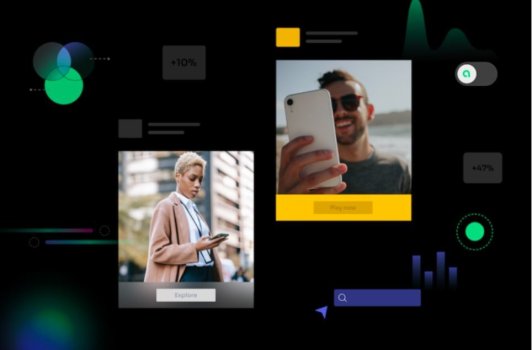In today's brand marketing ecosystem mobile is front and center. The massive disruption of TV consumption, shifting from linear to streaming, combined with the impact of the COVID-19 pandemic on digitalization, has solidified mobile as the most powerful and stable medium for marketers.
According to App Annie's State of Mobile 2022 report, mobile use is growing at a record-setting pace. Consumers worldwide spent 3.8 trillion hours on mobile devices in 2021, and advertisers spent $295 billion trying to reach them. This year, ad spend will climb to $350 billion as mobile devices remain inseparable from their owners.
The challenges facing mobile marketers To facilitate advertisers' growing interest in mobile audiences, marketing technology has stepped up, advancing rapidly to meet the moment. However the influx of piecemeal solutions has caused more noise and fragmentation for marketers who are expected to stay ahead of current trends to keep their companies competitive.
Perhaps one of the most complex challenges marketers face is reaching precise audiences with the highest chance of conversion, and without overspending. Return on ad spend (ROAS) is a key performance metric for any marketer, yet measuring ad spend across platforms, and quantifying the associated business performance, require integrating various tools, leveraging different methods of collecting and analyzing granular data.
Artificial intelligence (AI) has proven its value across many other facets of digital marketing: programmatic ad delivery, creating unique customer experiences, optimizing ad bidding strategies and creating data-backed insights. However, the process of audience-building and segmentation, one of the most crucial stages in marketing, has been left out in the cold. If marketers can't reach the right audience, every effort will fail.
Continue reading: https://adage.com/article/marketing-news-strategy/using-ai-customize-audience-segments-and-demographics/2398606
According to App Annie's State of Mobile 2022 report, mobile use is growing at a record-setting pace. Consumers worldwide spent 3.8 trillion hours on mobile devices in 2021, and advertisers spent $295 billion trying to reach them. This year, ad spend will climb to $350 billion as mobile devices remain inseparable from their owners.
The challenges facing mobile marketers To facilitate advertisers' growing interest in mobile audiences, marketing technology has stepped up, advancing rapidly to meet the moment. However the influx of piecemeal solutions has caused more noise and fragmentation for marketers who are expected to stay ahead of current trends to keep their companies competitive.
Perhaps one of the most complex challenges marketers face is reaching precise audiences with the highest chance of conversion, and without overspending. Return on ad spend (ROAS) is a key performance metric for any marketer, yet measuring ad spend across platforms, and quantifying the associated business performance, require integrating various tools, leveraging different methods of collecting and analyzing granular data.
Artificial intelligence (AI) has proven its value across many other facets of digital marketing: programmatic ad delivery, creating unique customer experiences, optimizing ad bidding strategies and creating data-backed insights. However, the process of audience-building and segmentation, one of the most crucial stages in marketing, has been left out in the cold. If marketers can't reach the right audience, every effort will fail.
Continue reading: https://adage.com/article/marketing-news-strategy/using-ai-customize-audience-segments-and-demographics/2398606

